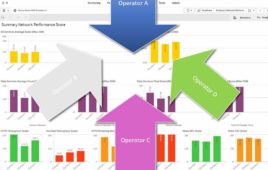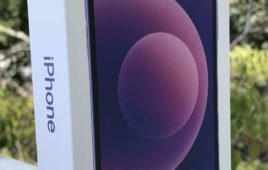Verizon’s fixed wireless 5G in-home broadband service went live this morning, with the first installation taking place at a customer’s home in Houston.
Dubbed 5G Home, the service is also being deployed today to customers in Los Angeles, Sacramento, and Indianapolis. Verizon is charging $50 per month for customers that also subscribe to its wireless service and $70 per month for non-Verizon Wireless customers.
“This is the first time that this has been done on the globe, nobody has done this before, so this is a first and that is why this day is so significant,” Mike Haberman, VP of network engineering at Verizon, tells Wireless Week.
Haberman, a 28-year veteran of Verizon who is responsible for building the network and has deployed a number of technologies including LTE, says there were a variety of components that needed to be implemented over the last four or five years before the service was ready to go live.
“The first thing you need to do is you need to get dark fiber,” he says. “And it needs to be available in a lot of places because of backhauling all of the traffic that you’re sending from the houses and devices that can get super high throughputs. It’s not enough to just get it from the device to the cell site, you have to be able to backhaul to a location to get it wherever it needs to go.”
Second is spectrum, according to Haberman, which Verizon has a plethora of millimeter wave spectrum, including in the 28 GHz band.
“You can’t deploy 5G without [mmWave spectrum],” he says. “You can try and do it at lower frequencies but the issue is you just don’t have the bandwidth.” That’s when 5G starts to look like LTE Advanced, Haberman says.
Third is densifying the network by installing new small cells in downtown areas, “to get lower and tighter to the customer,” Haberman notes.
Finally, he pointed to Verizon’s software-defined network, which he said isn’t quite needed for 5G deployment, but that the company is certainly utilizing to enable network slicing and moving core functions to the edge of the network to improve latency, among other things, for applications like VR.
First Installations
During the installation customers will get a new router form WMC, which Haberman says is similar to a typical router, and then a second small box that serves as a modem and delivers the 5G connectivity. So the 5G signal will be picked up from a Verizon cell site, travel to the modem, which is then connected via cable to the router in order to deliver WiFi throughout the home.
Customers with a WiFi mesh network will not need to change any setup or passwords, except to plug into the new router.
The fixed wireless broadband service is built on Verizon’s 5G TF network standard, but when 3GPP 5G NR standard-compliant equipment becomes available, customers’ equipment will be upgraded at no charge.
When it comes to a new antenna, Haberman says there’s two flavors, where a technician determines to either install inside or outside of the home, depending on the location.
For the initial deployments Verizon is doing white glove installs, but that’s not because a customer couldn’t necessarily do it themselves, according to Haberman.
“This is the first [5G deployment] on the globe and we just want to make sure it’s done right so that when we leave the service is in good working operation,” he says.
Verizon has said customers can expect average speeds of 300 Mbps and peak speeds of nearly 1 Gbps.




